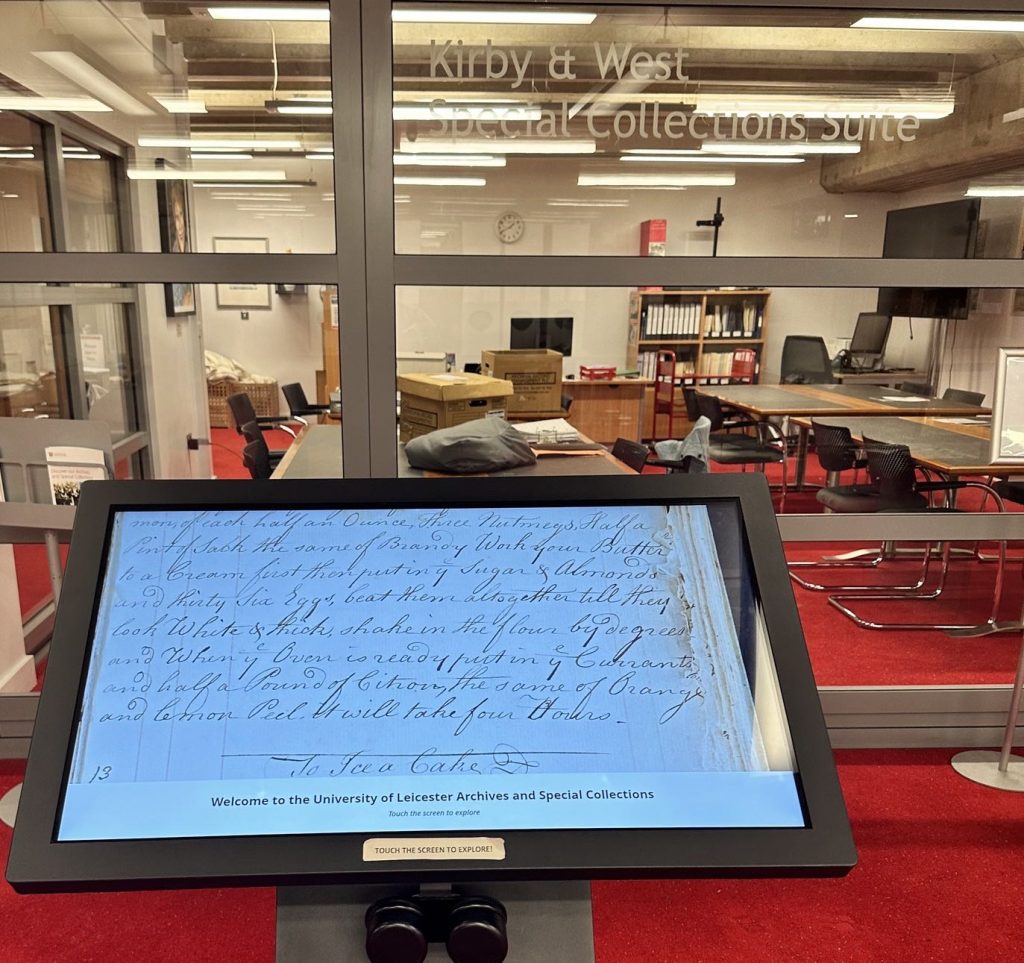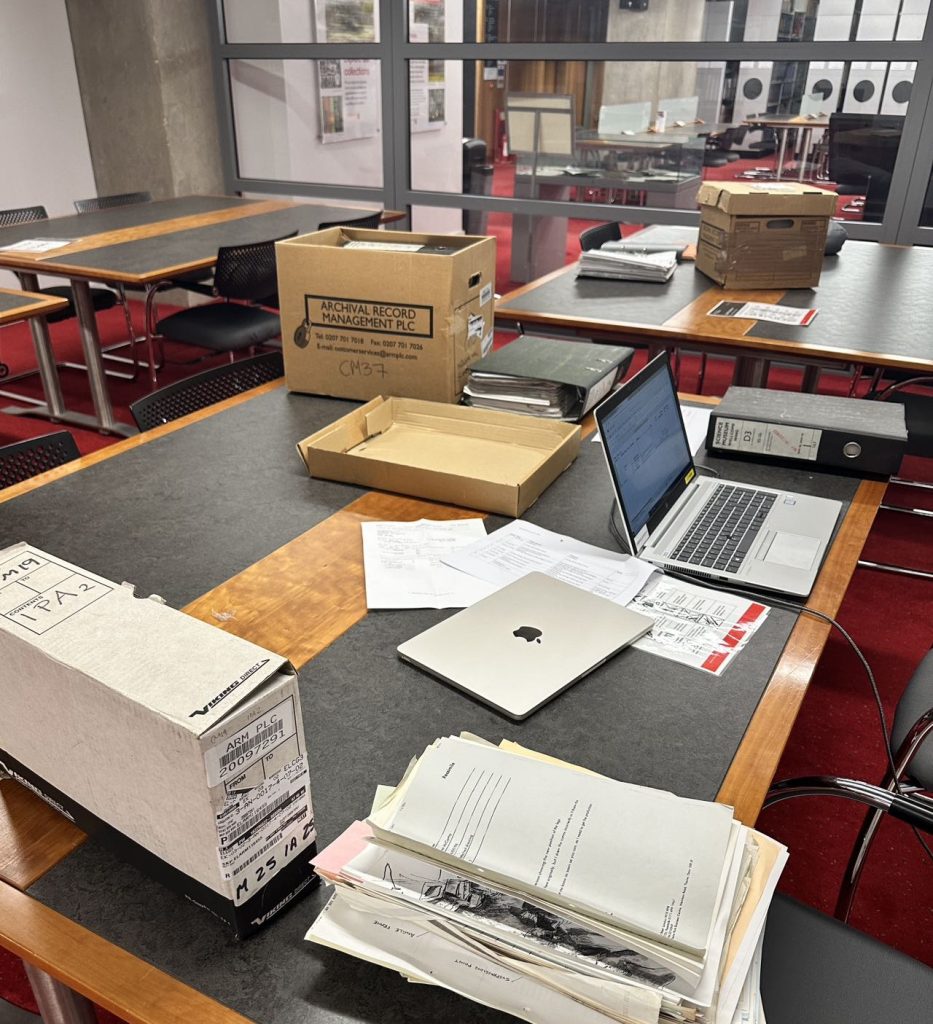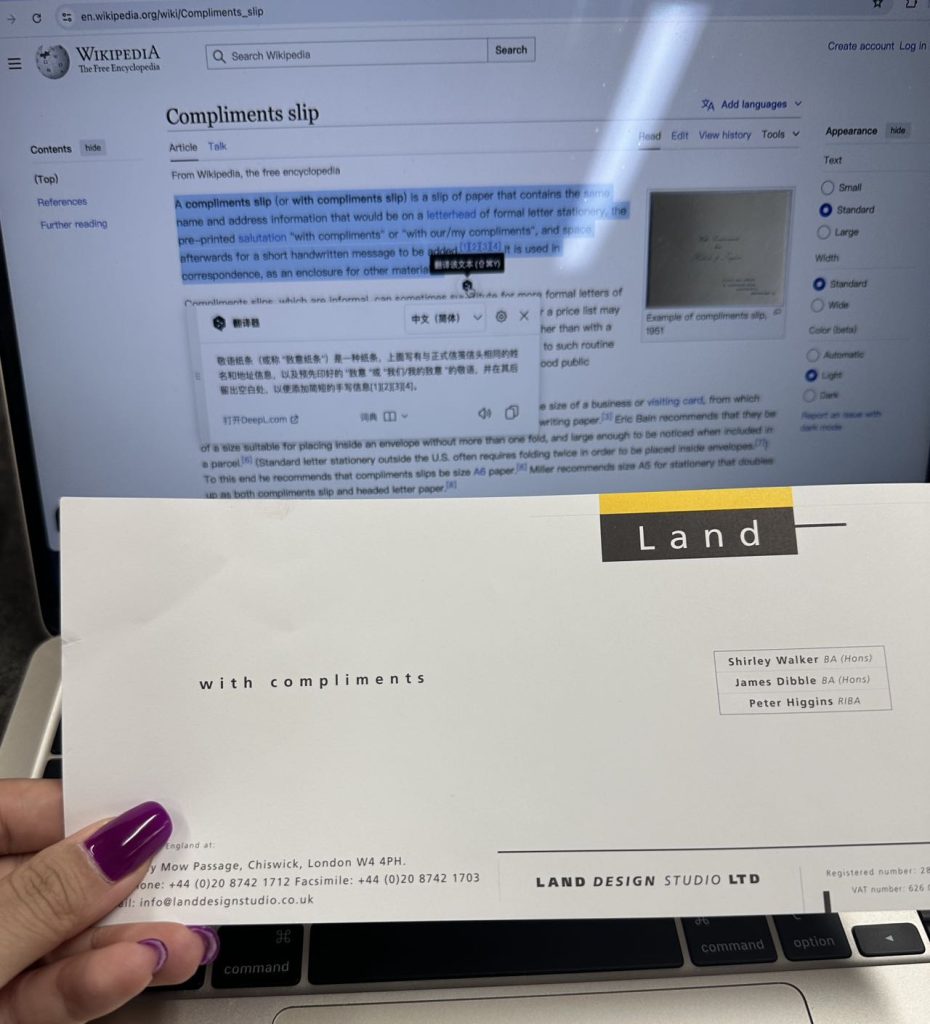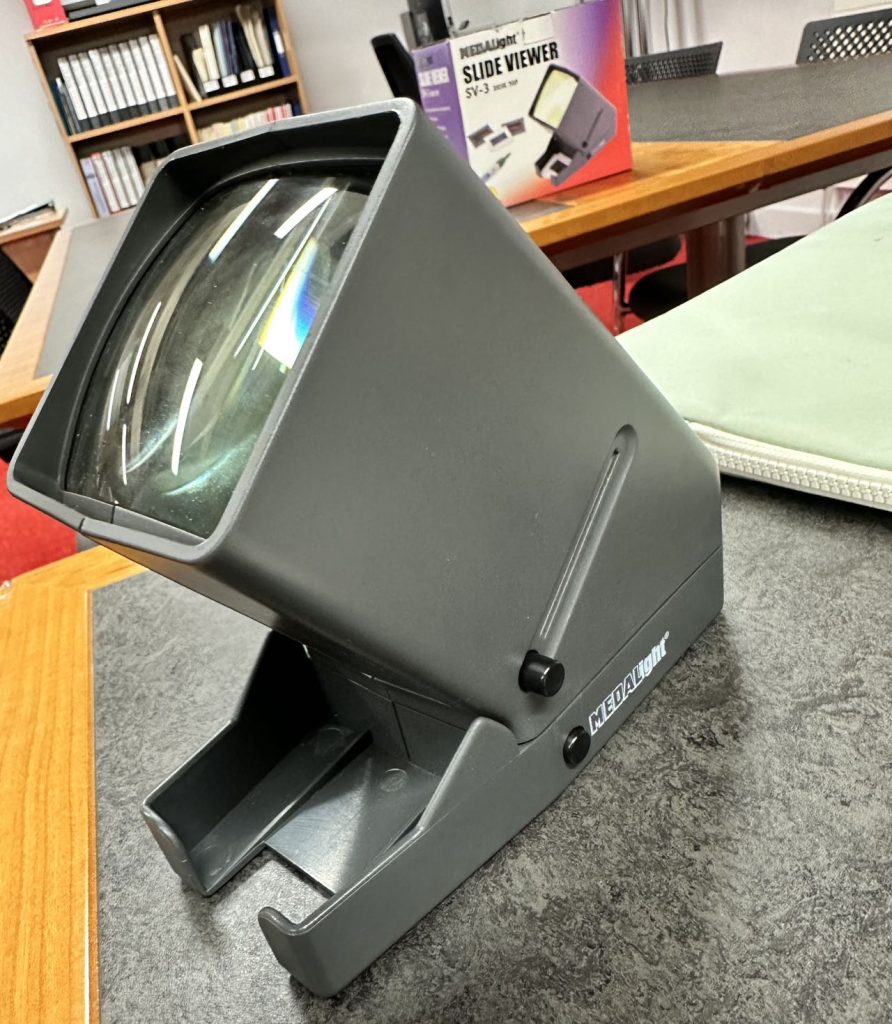This is an introduction to the work that Yiqian Zhu (Jewel) started in July at the beginning of the Museum Studies course practical placement, with Archives and Special Collections.
My name is Yiqian Zhu. I am an Art Museum and Gallery Studies student from the University of Leicester, and I am currently on an 8-week placement in the Archives and Special Collections department of the David Wilson Library. During the first two weeks of my placement I have been working on the main work projects of listing records of a design company and creating enhanced descriptions for the LANDESIGN company archive. Below I would like to share some of my interesting work experiences so far.

When I started my placement, my colleague Mingwei and I, who are both studying museum studies, began learning how to list and describe archives. Our supervisor, Vicky, guided us in identifying archival box numbers, content information, and storage conditions. My first task was to list the files in the archive box of Casson Mann, a renowned London-based museums, exhibitions and design interiors company with a wealth of experience in transforming spaces and environments for some of the world’s leading cultural institutions. Their notable projects include the refurbishment of the British Galleries at the V&A Museum, the transformation of Nottingham Castle and the redevelopment of the Science Museum’s “Who Am I?” Gallery at the Science Museum, among other endeavours.
During the first week I went through each box, listing key information about the various documents, sketches and designs. It was fascinating to see the creative process behind some of their projects. The composition of the files inside the boxes was impressive, and included complete fax records of the company’s work with clients and even third-party supervisors from the 1990s onwards, design plans, detailed design drawings and quotations for various projects, and much more. Faxing may not be convenient enough for our lives today, but for people in the 1990’s it was an important way they used to communicate their workflow. I’d say it’s really cool because I’ve witnessed several projects go from zero to design concepts, to their careful selection of materials, and finally to completion through these fax communications. The whole process was very interesting and amazing to me.

Week 2 I started working on an enhanced description of their project archive for another renowned British design company, LANDESIGN. Land design studio specialises in landscape architecture and urban design and has contributed to many high profile projects in the UK, with notable projects such as the Playzone in the Millennium Dome, the ”City Being” Pavilion at the Shanghai Expo 2010, and many more. Additionally, Land has designed numerous temporary and touring exhibitions for prestigious museum galleries such as the British Museum, the V&A and the Natural History Museum.
Developing these descriptions required a more detailed understanding of the categories of each archive and the scale, objectives, and outcomes of the project. The process of enhancing the descriptions for the LAND archives was more challenging for me than the first week, as I occasionally encountered types of archives with which I was not familiar, such as “compliments slip”, digital slides and transparencies used in the 1990s.

As I am an international student, the “compliments slip” was unfamiliar to me from my own cultural background, and I had hardly ever seen such a small slip of paper in China, so I searched the internet to find out what it was used for. The compliments slip is a small, informal piece of stationery that accompanies business correspondence. It typically features the company’s logo, name, and contact information, along with a brief, handwritten or printed note expressing good wishes or appreciation. It is often used when sending documents, samples, or other items to add a personal touch to the communication.
Digital slides and transparencies are forms of archival storage used by LAND before the widespread use of computers in the office to present and preserve various types of photographic documentation of their design projects. When I’m describing these forms of archives, I usually need to use a tool like Slide Viewer to see the content of the image, which allows me to get a deeper description of the information.

Reflecting on my work experience during these two weeks, I realise that archives play a key role in preserving the heritage of creative and cultural projects. I am amazed at the multi- talent skills of the two design companies that I have worked with, and I have realised the connections that my current work has to the curatorial related courses that I have previously studied; both work with various cultural and heritage organisations, and their work has shown me how the work of a curator can be acted upon at a design level.
There are many people behind a well-curated exhibition, and the detailed records and descriptions of the work in these archives that I was exposed to ensured that the stories behind each project are not lost to time. Additionally, this experience has taught me the importance of patience and attention to detail. Describing a project requires careful deliberation to ensure accuracy and completeness.
I’m excited to continue this work, explore more interesting aspects of these projects, and share more updates with you in the coming weeks.

 Subscribe to vholmes's posts
Subscribe to vholmes's posts
Comments are closed, but trackbacks and pingbacks are open.